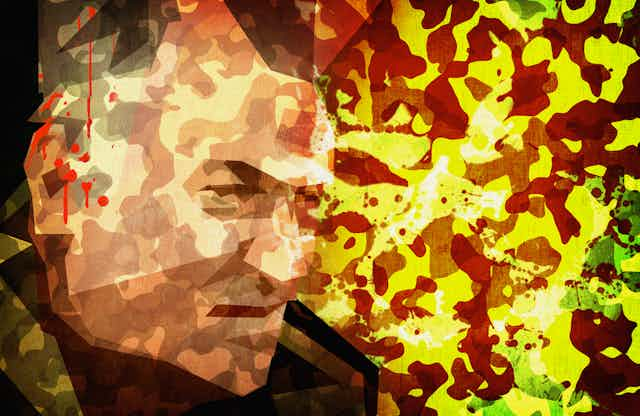Ratko Mladić’s sentencing for genocide in Srebrenica will doubtless be the headline in the plethora of press coverage that has accompanied judgement of the International Criminal Tribunal for the Former Yugoslavia (ICTY). But Mladić was also sentenced for his role in executing the siege of Sarajevo, the longest siege in modern European history during which citizens were targeted by mortar, shell and sniper fire and the city’s water and electricity was cut off. It was a brutal campaign to break the city’s resistance, and there was no distinction made between military and civilian targets.
Bosnia and Herzegovina was the most multi-ethnic of former Yugoslavia’s six republics. The population of its capital, Sarajevo, mirrored this ethnic complexity and the city itself. But the first multi-party elections in Bosnia in 1990 had brought a tenuous coalition of nationalist parties to power. This coalition, comprising the (Bosniak) Party of Democratic Action (SDA), the Serbian Democratic Party (SDS) and the Croatian Democratic Union (HDZ) were elected with a Bosniak, Alija Izetbegović, as president.
As the Yugoslav state continued to disintegrate, with Slovenia and Croatia both pursuing independence, Bosnia’s situation became increasingly dangerous. In short, Radovan Karadžić’s SDS wished to remain in a Yugoslav state, whatever form that would take, while both the SDA and the HDZ pursued independence. During heated exchanges in October 1991, the SDS walked out of parliament and set up a parallel Bosnian Serb assembly and de facto headquarters in the nearby Holiday Inn hotel.
Sliding into war
On February 29 and March 1, a referendum on independence was held. The SDS, arguing that the decision to hold a referendum was unconstitutional because it was not reached by consensus, called on Serbs to boycott the vote. Those who did vote, largely Bosniaks and Croats, opted for independence. The result initiated the “war of the barricades”, during which the SDS (and later the SDA) erected barricades in areas of Sarajevo they claimed as theirs. War was avoided then, but on April 6, 1992 shots were fired from the Holiday Inn by snipers into a crowd of peaceful demonstrators who were assembled outside the Bosnian parliament. In the chaos that followed, Karadžić fled. The Bosnian Serb leadership established their wartime base in nearby Pale and heavy weapons were placed on the hills surrounding Sarajevo. Intermittent shelling and sniping began.
Whether interested in politics or not, the siege imposed itself on ordinary people’s lives in increments. Many continued going to work, despite the sporadic sniper and mortar fire and fierce battles in Ilidža, just west of Sarajevo. They refused to believe it could happen in their city, which was civilised, cultured, part of the European mainstream. But any existing illusions were shattered by the summer of 1992. Mladić assumed command of the Bosnian Serb Army (VRS) in May 1992, promising to “blow the minds” of the citizens of Sarajevo. Throughout the subsequent months the city was heavily shelled, causing significant civilian casualties and the destruction of many important buildings, such as the Vijećnica, which housed thousands of rare books and manuscripts.

It was, however, the first winter of the siege that brought real privation to Sarajevo. No running water, no electricity and limited amounts of food (UN aid and anything that could be purchased for inflated prices on the black market) meant the challenges of surviving were manifold. And the extremities of life under siege had a significant impact upon people’s ability to stay sane. Daily shelling and sniping – sometimes in a slow and methodical manner – and constant danger of death placed citizens of Sarajevo in an unimaginable psychological position. Some withdrew into themselves, while others found survival mechanisms and a way of facing the realities of their lives. Otherwise normal activities became vital mechanisms for survival – dressing well, attending theatre performances or going to ad hoc gigs. Humour, albeit of the rather dark variant, was equally important. Preservation of one’s dignity was a serious matter.
The construction of a tunnel (built by the Bosnian Army) underneath Sarajevo airport in 1993 eased the situation somewhat, with arms and food being brought into the city – breaking somewhat the over-inflation of basic goods. But life under siege became a reality with no end in sight. The international community’s efforts to bring the siege to an end had failed, though NATO airstrikes on VRS positions, following the two mortar attacks (in February 1994 and August 1995) would eventually help to do so.

The war in Bosnia ended with the signing of the Dayton Peace Agreement in November 1995, though the siege of Sarajevo was not lifted until February 1996. As part of the peace agreement, the vast majority of the city – with the exception of Istočno Sarajevo (eastern Sarajevo) – became part of the Federation of Bosnia and Herzegovina, one of the country’s two entities (the other being Republika Srpska). This initiated the departure of the majority of the city’s Serb population.
By the lifting of the siege over 11,000 people, 5,000 of whom were civilians (2,000 were children), were killed during the siege of Sarajevo. In the context of the charges relating to Sarajevo, Mladić’s sentencing is no surprise – his colleagues, Stanislav Galić and Dragomir Milošević both commanders of the Sarajevo-Romanija Corps of the VRS had previously received lengthy sentences. Mladić’s sentencing for the siege of Sarajevo (not to mention his other crimes) will never compensate for the destruction of a city and the targeting of civilians, but it may go some way to bringing a close to a dark chapter in Bosnia, and Sarajevo’s, history.

